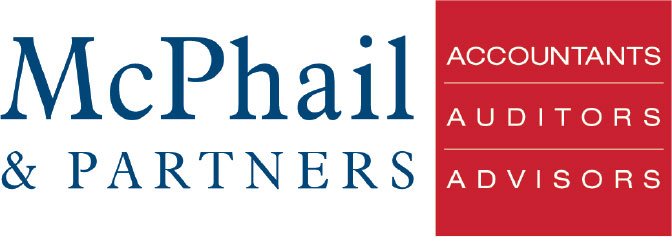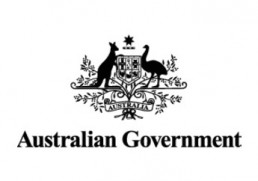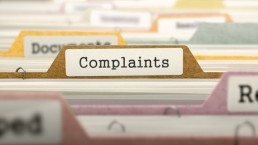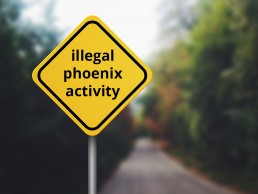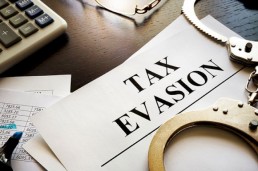Australian Government announces $130 billion JobKeeper Payment in Response to the Coronavirus Pandemic
Australian Government announces $130 billion JobKeeper Payment in Response to the Coronavirus Pandemic
The Government is introducing a subsidy program to support employees and businesses. The JobKeeper Payment is designed to help businesses affected by the Coronavirus to cover the costs of their employees’ wages, so that more employees can retain their job and continue to earn an income.
Overview
The JobKeeper Payment will support employers to maintain their connection to their employees. These connections will enable business to reactivate their operations quickly – without having to rehire staff – when the crisis is over.
In summary:
- Under this proposal the government will provide eligible businesses with funding of $1,500 per fortnight per eligible employee for up to 6 months.
- The JobKeeper Payment is provided in addition to the previously legislated stimulus packages and goes a step further to help support those businesses and employees that have suffered significant financial impacts as a result of the ongoing Coronavirus pandemic.
- Importantly this payment will also be available to the self-employed and not-for-profit organisations.
Eligibility - Employers
Employers will be eligible for the subsidy if:
- their business has a turnover of less than $1 billion and their turnover has fallen by more than 30 per cent; or
- their business has a turnover of $1 billion or more and their turnover has fallen by more than 50 per cent; and
- the business is not subject to the Major Bank Levy.
To calculate if a business has faced the required percentage fall in their turnover, the business would need to compare their turnover for the month of March 2020 (for monthly BAS lodgers) or three months January-March 2020 (for quarterly BAS lodgers) with the income reported for the relative period a year earlier.
The Tax Commissioner will have discretion to consider additional information where special circumstances exist, such as a new business which was not in operation a year earlier, or where their turnover a year earlier was not representative of their usual or average turnover. We suspect there will be a special application required in these circumstances however further details will be provided by the ATO in due course.
Not-for-profit entities (including charities) and self-employed individuals (businesses without employees) that meet the turnover tests that apply for businesses are eligible to apply for JobKeeper Payments.
Eligibility - Employees
Eligible employees are employees who:
- are currently employed by the eligible employer (including those stood down or re-hired);
- were employed by the employer at 1 March 2020;
- are full-time, part-time, or long-term casuals (a casual employed on a regular basis for longer than 12 months as at 1 March 2020);
- are at least 16 years of age;
- are an Australian citizen, the holder of a permanent visa, a Protected Special Category Visa Holder, a non-protected Special Category Visa Holder who has been residing continually in Australia for 10 years or more, or a Special Category (Subclass 444) Visa Holder; and
- are not in receipt of a JobKeeper Payment from another employer.
If your employees receive the JobKeeper Payment, this may affect their eligibility for payments from Services Australia as they must report their JobKeeper Payment as income.
Application Process
The Government has advised all employers to register their interest in applying for the JobKeeper Payment via ato.gov.au so they are kept up to date with when information becomes available. This registration only takes 30 seconds to complete and requires the business to simply provide their ABN and contact details.
Once this legislation has passed through Parliament, eligible employers will be able to apply for the scheme via an online application with the ATO making the first payments to employers in the first week of May 2020.
Payment Process
Eligible employers will be paid $1,500 per fortnight per eligible employee. Eligible employees will receive, at a minimum, $1,500 per fortnight, before tax, and employers are able to top-up the payment.
Where employers participate in the scheme, their employees will receive this payment as follows.
- If an employee ordinarily receives $1,500 or more in income per fortnight before tax, they will continue to receive their regular income according to their prevailing workplace arrangements. The JobKeeper Payment will assist their employer to continue operating by subsidising all or part of the income of their employee(s).
- If an employee ordinarily receives less than $1,500 in income per fortnight before tax, their employer must pay their employee, at a minimum, $1,500 per fortnight, before tax.
- If an employee has been stood down, their employer must pay their employee, at a minimum, $1,500 per fortnight, before tax.
- If an employee was employed on 1 March 2020, subsequently ceased employment with their employer, and then has been re-engaged by the same eligible employer, the employee will receive, at a minimum, $1,500 per fortnight, before tax.
It will be up to the employer if they want to pay superannuation on any additional wage paid because of the JobKeeper Payment. Payments will be made to the employer monthly in arrears by the ATO.
What you need to do:
- Eligible employers should register their interest for the JobKeeper payment with the ATO straight away via the ATO website
- Business accounting records should be updated to the end of March 2020 as soon as possible to determine impact on business turnover
- Identify all eligible employees of your business as you will need to provide these details to the ATO once applications open
- Wait for further information on the application process and finer details of the scheme to be released by the Government
These are the details which have been announced at this stage however further clarification on the operation of the scheme is expected over the coming weeks once legislation has been passed. We will be doing our best to follow up with all effected clients who may qualify for this payment. However, if you wish to discuss any of these items and how they may impact on your business, please do not hesitate to contact the office on 9898 9221.
Foreign Residents and the Main Residence Exemption
Laws limiting foreign residents’ ability to claim the CGT main residence exemption are now in place. This means that if you’re a foreign resident for tax purposes at the time you sign a contract to sell a property that was your main residence, you may be liable for tens of thousands of dollars in CGT. Some limited exemptions apply for “life events”, as well as property purchased before 9 May 2017 and disposed of before 30 June 2020.
According to the ATO, a person’s residency status in earlier income years will not be relevant and there will be no partial CGT main residence exemption. Therefore, not only are current foreign residents affected, but current Australian residents who are thinking of spending extended periods overseas for work or other purposes may also need to factor in this change to any plans related to selling a main residence while overseas.
ATO Scrutiny On Car Parking Fringe Benefits
The ATO has started contacting certain employers that provide car parking fringe benefits to their employees to ensure that all fringe benefits tax (FBT) obligations are being met. Generally, car parking fringe benefits arise where the car is parked on the business premises of the entity, used by the employee to travel between home and their primary place of employment and is parked for more than four hours between 7 am and 7 pm, and where a commercial parking station located within 1 km of the premises charges more than the car parking threshold amount.
Employers have a choice of three methods to calculate the taxable value of the benefits: the commercial parking station method, the average cost method and the market value method. The method currently under ATO scrutiny is the market value method, which states that the taxable value of a car parking benefit is the amount that the recipient could reasonably be expected to have to pay if the provider and the recipient were dealing with each other under arm’s length conditions.
Australia’s Independent Tax Complaints Investigator
Do you know who to turn to when you have a complaint about the ATO? Whether you’re an individual or business, the Inspector-General of Taxation and Taxation Ombudsman (IGTO) should be your first port of call.
As the Taxation Ombudsman, the IGTO provides all taxpayers with an independent complaints investigation service. As the Inspector-General of Taxation, it also conducts reviews and provides independent advice and recommendations to government, ATO and other departments.
The IGTO can investigate and assist with issues including extensions of time to pay; the ATO’s debt recovery actions; delays with processing tax returns; delays in ATO communication and responses; information the ATO has considered regarding taxpayers’ matters; understanding the ATO’s actions and decisions; and identifying available options and other relevant agencies that can help.
Complaints can be made online and via phone or post, and services are offered in languages other than English as well as for people who are hearing, sight or speech impaired.
Insurance Payouts: Are They Taxable?
In recent months, parts of Australia have been battered by a combination of fire and floods. As people try to piece their lives together in the aftermath, insurance payouts can go a long way in helping rebuild homes and replace lost items.
However, if you receive an insurance payout in relation to your business, home business or rental property you need to be aware there may be associated tax consequences. For example, if you keep a home office or run a business from home, or make money from renting out your home on a short-stay website, you may be subject to capital gains tax (CGT) when receiving an insurance payout on the home.
Businesses that receive an insurance payment may be subject to varying tax consequences depending on what the payment is designed to replace.
Tip: If you’ve recently received an insurance payment or you’re expecting one, contact us to find out more about how your tax obligations could be affected.
New Measures To Combat Illegal Phoenixing
New laws are now in place to target illegal phoenixing of companies in Australia.
Phoenix activity is when a new company is created – “rising from the ashes” of another company that was in debt and has been deliberately liquidated – to continue the business of the old company while avoiding having to pay its debts. Recent estimates are that illegal phoenix activity directly costs Australian businesses, employees and governments between $2.85 billion and $5.13 billion each year.
To combat this type of debt and tax evasion, the new laws target a range of behaviours, including preventing property transfers to defeat creditors, improving the accountability requirements for resigning company directors, allowing the ATO to collect estimates of anticipated GST liabilities and authorising the ATO to retain tax refunds where lodgements are outstanding.
ATO Tackling International Tax Evasion
Australian tax residents are taxed in Australia on their worldwide income. While most do the right thing and declare all their income, some people and businesses try to avoid paying tax by exploiting secrecy provisions and information-sharing gaps between countries.
A recent coordinated effort by the Joint Chiefs of Global Tax Enforcement (J5) has yielded evidence of tax evasion by Australians. The J5 consists of the tax and revenue agencies of Australia, the United Kingdom, the United States, Canada and the Netherlands and was initially formed in 2018 to fight global tax evasion. The countries share intelligence on international tax crime as well as money laundering.
According to the ATO, several hundred Australians are suspected of participating in arrangements with an international financial institution in Central America whose products and services are believed to be facilitating worldwide money laundering and tax evasion. Multiple investigations are currently under way, and anyone with information about the scheme or other similar arrangements is encouraged to contact the ATO.
The ATO has a network of international tax treaties and information exchange agreements with over 100 jurisdictions. In recent years over 2,500 exchanges of information have occurred, enabling the ATO to identify unpaid tax amounts totalling $1 billion.
TIP: The message from the ATO is that anyone with offshore income or assets is better off declaring their interests voluntarily. Those who do so may be eligible for reductions in related administrative penalties and interest charges.
Super Guarantee Loopholes Closed
The concept of a superannuation guarantee – the legal requirement for your employer to contribute 9.5% of your salary into a nominated super account – should be familiar to everyone, as it makes up the bulk of most people’s future retirement income. You may also salary-sacrifice amounts of your salary to put extra into your super.
Until recently, loopholes in the law meant that your employer could count your salary-sacrificed amounts towards their super guarantee contribution amounts – essentially working against your intention to boost your super. Employers could also calculate their super guarantee obligations based on your post-sacrifice earnings rather than on your full pre-sacrifice earnings.
Depending on your employment agreement, these loopholes meant that if you salary-sacrificed an amount equal to or more than your employer’s super guarantee amount, your employer could choose to not contribute any amount and the legal requirements of the super guarantee would still be met.
TIP: It’s important to note that this wasn’t the original intention of the law, and not all employers would choose to exploit these loopholes. However, where they did, employees who salary-sacrificed could be short-changed and end up with lower super contributions as well as a lower salary overall.
The good news is that the law has now been changed. From 1 January 2020, amounts that you salary-sacrifice to super can’t be used to reduce your employer’s super guarantee obligations, and employers must calculate their super guarantee obligations based on all of your ordinary time earnings (OTE), including any amounts you sacrifice into superannuation that would have otherwise been OTE.
Australian Government Changes to Income Support Payments for Individuals Effected by the Coronavirus Pandemic
Australian Government Changes to Income Support Payments for Individuals Effected by the Coronavirus Pandemic
The Australian Government’s stimulus packages include measures to provide support to those Australians whose employment has been negatively impacted by the Coronavirus Pandemic. We have outlined below the main elements of these measures which will apply over the next 6 months.
-
Sole traders and self-employed eligible for JobSeeker payment and Youth Allowance.
The eligibility criteria to access income support payments will be relaxed to where you’re:
- a permanent employee who has been stood down or lost your job
- a sole trader, self-employed, a casual or contract worker whose income has reduced
- caring for someone who’s affected by coronavirus.
Centrelink will waive asset testing from 27th April 2020 for 6 months although income testing will still apply. The usual waiting periods for these payments have also been waived and Centrelink are applying additional resources to process all applications as fast as possible.
Please note that you can’t access employer entitlements, such as annual leave or sick leave, or income protection insurance at the same time as getting JobSeeker Payment or Youth Allowance for job seekers.
What you need to do:
- If you meet one of the eligibility criteria above, you should contact Centrelink to discuss and lodge your application for support as soon as possible.
-
Temporary Coronavirus Supplement
For the next 6 months the Government is introducing a new Coronavirus supplement to be paid at a rate of $550 per fortnight. This supplement will be in paid to both existing and new recipients of the eligible payment categories and is in addition to the regular amounts paid.
This supplement will automatically be paid from 27th April 2020 to individuals receiving the following payments:
- JobSeeker Payment
- Youth Allowance for job seekers
- Youth Allowance for students
- Austudy for students
- ABSTUDY for students
- Parenting Payment
- Farm Household Allowance
- Special Benefit.
What you need to do:
- If you are already receiving one of the payments listed above, you do not need to do anything. Centrelink will automatically add the supplement to your regular fortnightly payment.
- If you are not yet receiving one of these payments but are eligible you should submit your application ASAP via myGov using a Centrelink Online account or by calling Centrelink.
-
Two rounds of One-off stimulus payments of $750
The Government will provide two separate tax free one-off payments of $750 to recipients of certain income support payments.
The first one-off payment of $750 will be made from 31st March 2020 with most recipients receiving it by 17th April 2020. This payment will be automatically paid to those individuals receiving the certain payments between 12th March 2020 and 13th April 2020 or those holding certain concession cards. A full list of the eligible payments and cards can be found on the Centrelink website here
The second one-off payment of $750 will be made from 13th July 2020 if, on the 10th July 2020, you are eligible for any of the payments or concession cards that were eligible for the first one-off payment mentioned above.
However, this second one-off payment will not be paid to anyone receiving the Coronavirus Supplement mentioned previously.
What you need to do:
- If you are already receiving one of the eligible payments, you do not need to do anything. Centrelink will automatically pay the relevant one-off payments to you in April 2020 and July 2020.
- If you are not yet receiving one of these payments but are eligible you should submit your application ASAP via myGov using a Centrelink Online account or by calling Centrelink.
If you wish to discuss these items and how they may impact on you, please do not hesitate to contact the office on 9898 9221.
Australian Government Changes to Superannuation in Response to the Coronavirus Pandemic
Australian Government Changes to Superannuation in Response to the Coronavirus Pandemic
The Australian Government’s stimulus packages include two key changes to the existing Superannuation rules to help both retirees and individuals who find themselves in financial distress as a result of the Coronavirus Pandemic
-
Temporary reduction in minimum superannuation draw down rates.
The current superannuation rules dictate a default minimum pension drawdown for those Australians who have converted their superannuation benefits into a Retirement Phase Income Stream (previously known as an Account Based Pension). These rates start at 4% of the opening account balance for those under 65 and increase based in the member’s age up to 14% for those over 95.
In light of the significant impact the Coronavirus has had on the global stock markets the Australian Government has announced the annual minimum pension rates will now be reduced by 50% for both the 2019-2020 and 2020-2021 financial years. The rates for the next two years will therefore be as follows:
| Age | Default minimum drawdown rates (%) | Reduced rates by 50 per cent for the 2019-20 and 2020-21 income years (%) |
| Under 65 | 4 | 2 |
| 65-74 | 5 | 2.5 |
| 75-79 | 6 | 3 |
| 80-84 | 7 | 3.5 |
| 85-89 | 9 | 4.5 |
| 90-94 | 11 | 5.5 |
| 95 or more | 14 | 7 |
These measures are designed to assist members to preserve the capital values of their superannuation benefits and prevent them from being forced to sell the underlying investments at significantly reduced values in order to meet their minimum pension requirements.
Some members may have already withdrawn pensions for the 2019-2020 financial year in excess of the amount calculated with the new minimum rates. Unfortunately, in these circumstances you are not permitted to return the excess amount to your Superannuation Fund.
What you need to do:
- We will be contacting all clients with Income Streams within their Self-Managed Superannuation Funds (SMSFs) to discuss the impact of this change with you and what needs to be done prior to 30th June 2020.
- For those clients who have an Income Stream from a public retail or industry fund you will need to speak with your Superannuation Fund or Financial Planner directly to discuss your options if you wish to reduce your payments for the remainder of this financial year or next financial year.
-
Early release of superannuation
From mid-April, individuals in financial distress will be able to access up to $10,000 of their superannuation in 2019-2020, and a further $10,000 in 2020-2021. The withdrawals will be tax free and will not affect Centrelink or Veterans’ Affairs payments.
To be eligible to access your superannuation you need to meet at least one the following requirements:
- you are unemployed; or
- you are eligible to receive a job seeker payment, youth allowance for jobseekers, parenting payment (which includes the single and partnered payments), special benefit or farm household allowance; or
- on or after 1 January 2020:
- you were made redundant; or
- your working hours were reduced by 20% or more; or
- if you are a sole trader — your business was suspended or there was a reduction in your turnover of 20% or more.
For those eligible to access their superannuation, you can apply directly to the ATO through the myGov website from mid-April.
What you need to do:
- If you meet one of the above conditions and wish to access funds from your superannuation balance you should register for myGov, if you haven’t already, and submit your application once the facility opens in mid-April 2020.
